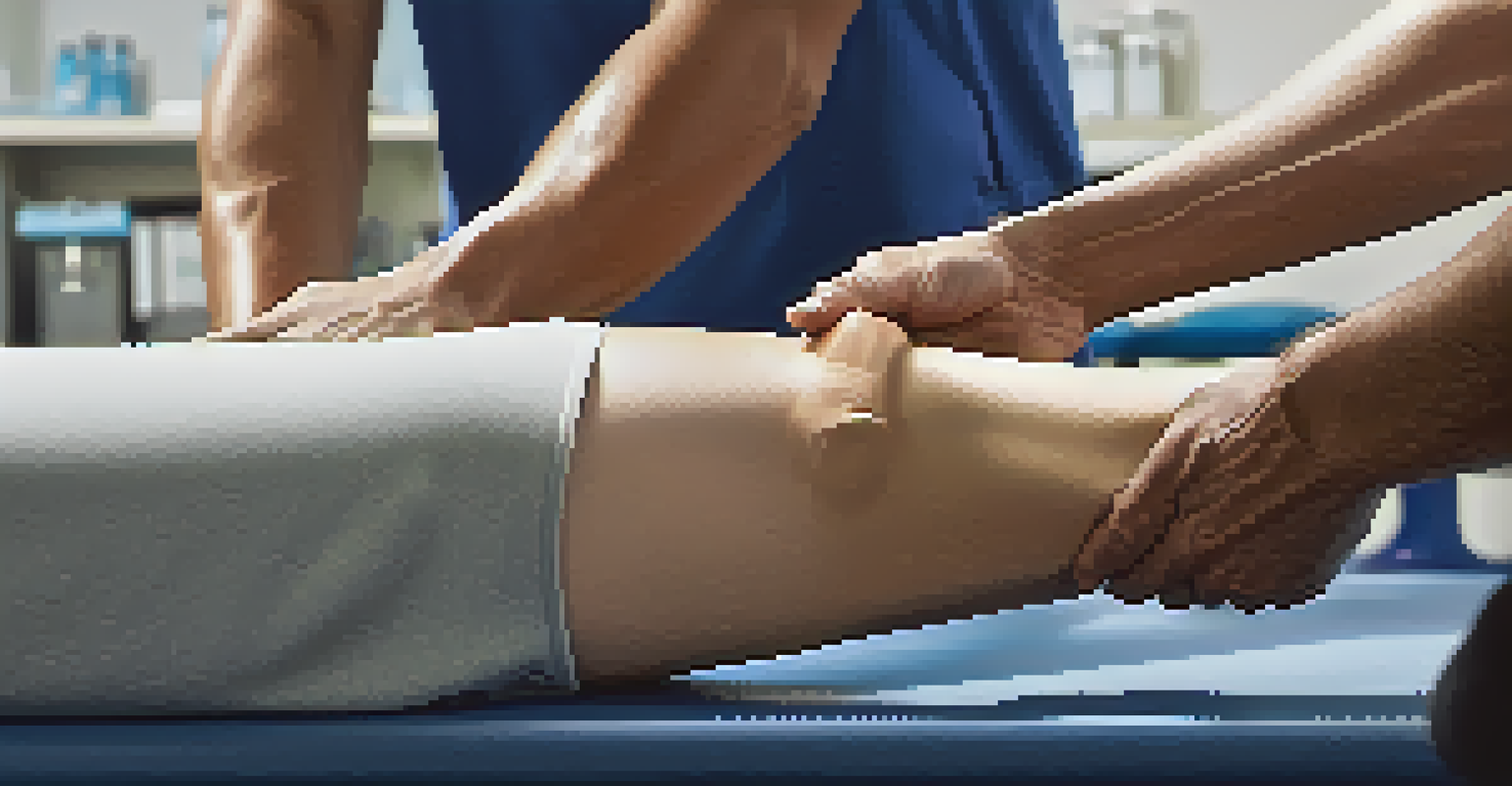Post-Injury Return to Sport: Guidelines for Athletes

Understanding the Importance of a Safe Return to Sport
Returning to sport after an injury is a critical phase in an athlete's recovery. It’s not just about getting back on the field but doing so safely to prevent re-injury. Athletes must recognize the importance of this transition to maintain their long-term health and performance.
In sports, the mental part is the most important part. You can be physically fit, but if you're not mentally prepared, you won't be able to perform at your best.
A safe return involves a thorough assessment of physical readiness, mental preparedness, and emotional stability. Rushing back can lead to setbacks, both physically and psychologically, impacting an athlete’s confidence and performance. Understanding this can help athletes make informed decisions about their recovery.
By following established guidelines, athletes can ease their way back into competitive environments. This structured approach not only supports their physical rehabilitation but also fosters a positive mindset, making the journey back to sport a little less daunting.
Consulting Healthcare Professionals for Guidance
Engaging with healthcare professionals is crucial for athletes recovering from injuries. Physical therapists, sports doctors, and even psychologists can provide tailored strategies to ensure a safe return. They can assess the injury's healing progress and offer specialized rehabilitation exercises.

Athletes should not hesitate to ask questions about their recovery plan. Understanding the timelines for healing and the expected physical capabilities can help set realistic goals. This collaborative approach allows athletes to feel supported and informed throughout their recovery.
Safe Return Requires Careful Planning
Athletes must prioritize a structured approach to their recovery, ensuring physical readiness and mental preparedness to avoid re-injury.
Moreover, professionals can help identify potential risk factors that could lead to re-injury. By addressing these concerns early on, athletes can modify their training and conditioning regimens, ensuring a smoother transition back to their sport.
Gradual Progression: The Key to Rebuilding Strength
One of the most effective strategies for returning to sport is gradual progression. Athletes should start with low-impact activities that mimic the movements of their sport before moving on to more intense training. This allows the body to adapt without overwhelming it.
The only way to prove you are a good sport is to lose.
For instance, someone recovering from a knee injury might begin with swimming or cycling to build strength and endurance. As confidence and capability grow, they can incorporate sport-specific drills. This gradual increase not only safeguards against re-injury but also helps rebuild muscle memory.
Listening to the body is paramount during this phase. If an athlete experiences pain or discomfort, it’s crucial to take a step back, reassess, and consult with professionals. This careful approach can make all the difference in a successful return.
Mental Preparedness: Building Confidence Post-Injury
Mental readiness is just as important as physical recovery when returning to sport. After an injury, athletes may experience fear or anxiety about re-injury, which can hinder their performance. Addressing these mental blocks through visualization techniques or counseling can be beneficial.
Engaging in mindfulness practices can help athletes stay focused and calm during training sessions. By centering their thoughts and managing anxiety, they can approach their sport with a positive mindset. This mental strength often translates to improved performance on the field or court.
Gradual Progression Builds Confidence
Starting with low-impact activities and slowly increasing intensity helps athletes rebuild strength while minimizing the risk of re-injury.
It's also vital for athletes to communicate openly about their feelings regarding their return. Discussing fears with coaches or teammates can foster a supportive environment, making the transition smoother and reinforcing their confidence to compete again.
Setting Realistic Goals for a Successful Transition
Setting realistic and achievable goals is essential for athletes returning to sport post-injury. These goals should be specific, measurable, and time-bound to keep athletes motivated and focused. For example, an athlete might aim to complete a certain number of training sessions per week before returning to full competition.
Break larger goals into smaller milestones to celebrate progress along the way. Achieving these incremental goals can boost confidence and reinforce a sense of accomplishment. This strategy helps athletes stay engaged and committed to their recovery plan.
Involving coaches in goal-setting can also provide additional support. Coaches can help athletes calibrate their expectations based on performance assessments, ensuring that goals remain aligned with their recovery progress.
Incorporating Injury Prevention Strategies in Training
Once athletes begin to return to sport, integrating injury prevention strategies is crucial. This might include incorporating strength training, flexibility exercises, and proper warm-up routines into their practice. Such measures can significantly reduce the risk of future injuries.
For example, athletes can work on strengthening key muscle groups that support their joints. This proactive approach not only aids in recovery but also enhances overall athletic performance. Understanding the biomechanics of their movements can empower athletes to make smarter training choices.
Support Networks Enhance Recovery
A strong support system of family, friends, and coaches is vital for an athlete's emotional well-being and can significantly aid the recovery process.
Additionally, regular check-ins with physiotherapists or trainers can help modify training regimens as needed. This ongoing support ensures that athletes continue to prioritize their health while pushing their performance boundaries.
Creating a Supportive Environment for Recovery
A supportive environment can significantly impact an athlete's recovery journey. Family, friends, coaches, and teammates play a crucial role in offering encouragement and understanding during this time. Their support can help ease the mental burdens associated with returning to sport.
Encouraging open communication allows athletes to share their thoughts, challenges, and triumphs. This dialogue fosters a sense of community and belonging, reminding athletes that they are not alone in their recovery process. Feeling supported can boost motivation and resilience.

Furthermore, athletes can benefit from sharing their experiences with peers who have gone through similar situations. This connection can inspire them and provide practical tips for overcoming challenges, making the return to sport a more positive experience.